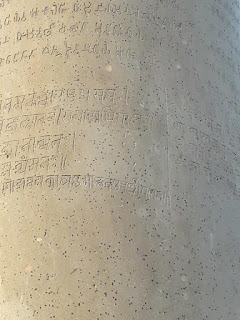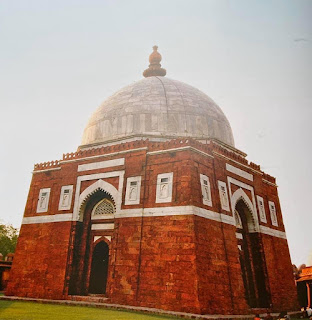Delhi Heritage Trail : 33
Feroz Shah Kotla (akka) Firozabad
Sandwitched between the Ring Road on the east and Bahadur Shah Zafar Marg on the west is the fifth city of Delhi Firozabad after Siri, Jahanpanah, Tughlaqabad and Lal Kot. It was built by Firoz Shah Tughlaq in 1354. You may ask why so many Delhi? It is the old traditions of rulers indulging in extensive building programmes partly to provide large scale employment and partly to demonstrate their might and glory. Then there is a belief in Islam that building a city is seen as an act of piety. Firoz Shah ascended the throne in 1351 AD and after a few years set his sights on repairing existing monuments, building new one, constructing sarais, baolis, hospitals, bridges and canals.
He was called "Patron saint of Irrigation system " because of the sheer number of canals constructed for irrigation the most prominent being Western Yamuna Canal. Firozabad had only a fortified inner citadel and the rest of the city was without any protection. This made Shajahan to use the remains of Firozabad to build Shajahanabad between 1638 AD to 1648 AD. The Palace inside Fero Shah Kotla is now in ruins and there is a baoli on the north which provided water to the City. There is Jama Masjid a biggest of the time which is constructed atop a series of fortified cells on the ground floor.
There is a 14 metre tall third century BC Ashokan pillar which was planted atop a pyramidal three tier structure. The Pali inscriptions on the pillar mentions about the good deeds of Ashoka which was repeated by Firoz Shah 16 centuries later. The main western gate with bastion on each side with sliding rectangle holes gives an insight about the enemy attacking the Fort.
In his memoir Malfuzat Timur the Mangol conqueror who attacked and looted Delhi in 1398 AD mentions
" I started from Delhi and marched three kos to the Fort of Firozabad which stands upon the bank of the Jamuna and is one of the edifices erected by Sultan Firoz Shah. There, I halted and went in to examine the place. I proceeded to the Masjid e Jami and offered up my praises and thanksgiving for the mercies of the almighty"
Timur was so impressed by what he saw that he took some of the artisans to erect a similar mosque in Samarkand.















